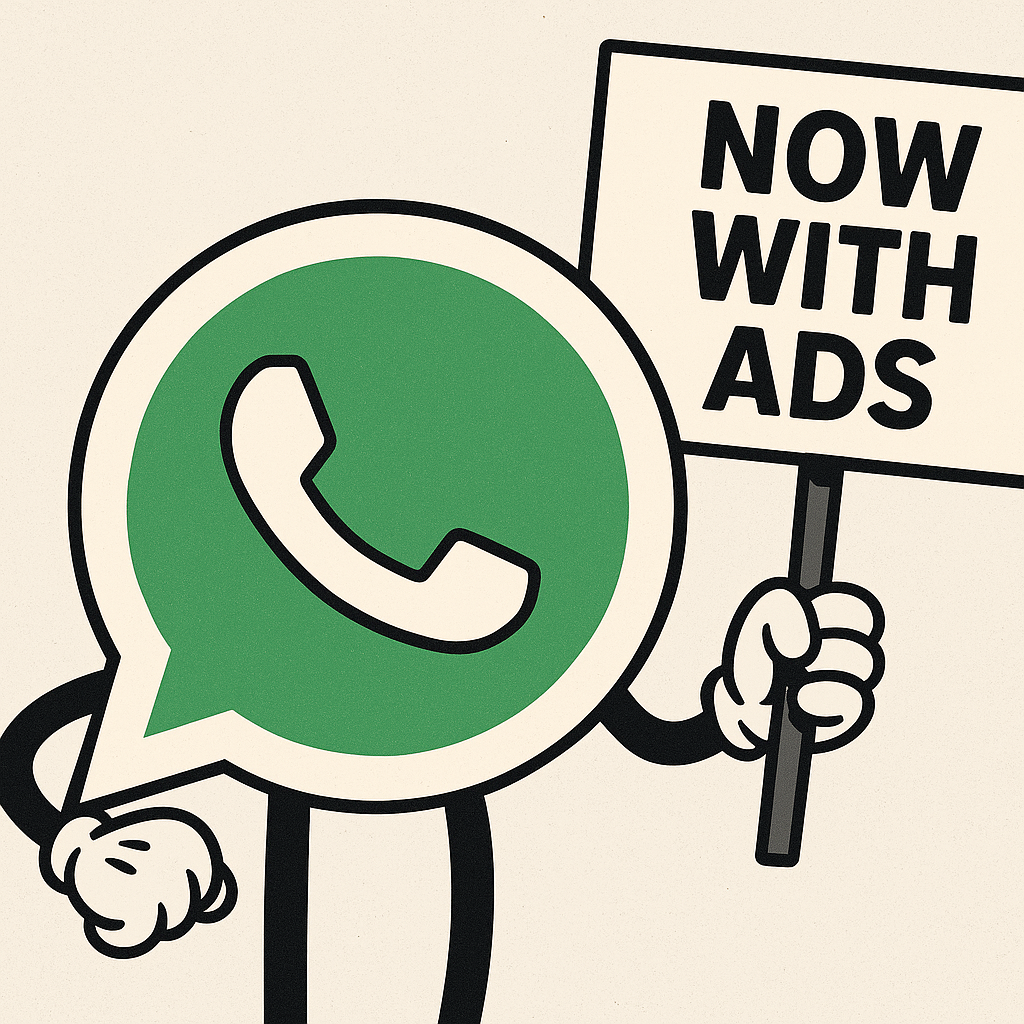WhatsApp Is Finally Getting Ads – But Only in the Updates Tab (For Now)
WhatsApp, the world’s most popular messaging app, is about to look a little different starting this Monday. Meta, its parent company, is introducing ads to the Updates tab, in what is arguably WhatsApp’s biggest monetisation move to date. The rest of the app? That’ll stay ad-free—at least for now.
Let’s break down what’s changing, why it matters, and what it signals for the future of private messaging.
A New Monetisation Strategy Focused on the Updates Tab
If you haven’t used it much, the Updates tab is home to Status (think: Instagram Stories) and Channels (a one-to-many broadcast feature). That’s where Meta is planting its flag. Here’s what’s coming:
- Ads in Status: Like Stories on Instagram, businesses can now promote content that appears between Status updates.
- Paid Channel Subscriptions: Creators and organisations can offer exclusive updates for a monthly fee, helping them generate income from followers.
- Promoted Channels: Businesses can pay to increase visibility in the WhatsApp Channel directory, reaching more users directly in-app.
The key thing? These ads and paid features will be confined to the Updates tab, away from your personal chats. That part of WhatsApp remains untouched—for now.

End-to-End Encryption Still Stays Central
WhatsApp’s main selling point has always been privacy. Meta knows that, and they’re keen to reassure users that private messages are still end-to-end encrypted.
That means:
- No one (not even WhatsApp) can read your messages.
- Every chat uses unique keys with forward secrecy, changing with each new message session.
- You can even verify encryption manually via QR codes or 60-digit security numbers.
Backups are also protected, whether you use Google Drive or iCloud, and even group chats enjoy full encryption with messages sent individually to each member.
So far, none of the monetisation efforts affect this part of the platform.
Paid Channel Subscriptions: A New Revenue Path
This is where things get interesting. WhatsApp’s paid channels could transform the app into something more than just a messenger.
- Channel owners can charge a monthly subscription fee.
- Followers get exclusive content or perks in return.
- Creators choose the price, and Meta says it won’t take a cut for the first year.
- Payments go through the app stores, not WhatsApp directly.
This positions WhatsApp as more of a broadcast and content hub, especially in markets where channels are already widely used (like India, Brazil, and parts of the Middle East).
And yes, you can opt out of the Updates tab entirely via your settings if none of this interests you.
A Privacy-Conscious Ad Model?
Meta says it’s keeping ad targeting minimal in WhatsApp:
- Ads in Status will be shown based on your city, language, channels you follow, and in-app ad interactions.
- If you’ve linked your account to Meta’s Accounts Center, your Facebook or Instagram data may also be used.
This is clearly Meta walking a fine line—generating revenue while trying to maintain WhatsApp’s long-standing reputation for privacy.
Why This Matters
This rollout is a big deal for a few reasons:
- It’s WhatsApp’s biggest business move yet since Meta bought it in 2014.
- It starts the slow shift from WhatsApp as a pure messaging tool to a hybrid of messaging + content + commerce.
- It tests how far users will tolerate ads in a space that’s been famously private and ad-free until now.
- It sets a precedent for how other “privacy-first” platforms might introduce monetisation without destroying trust.
My Take
Meta has been circling WhatsApp monetisation for years, but until now, it’s mostly stayed in the realm of business messaging tools. This is a bold but calculated next step.
Will users accept it? I think most won’t care—especially if private chats stay untouched and the Updates tab remains optional.
But long-term, this puts WhatsApp in more direct competition with platforms like Telegram (which also introduced paid channels), and even Substack or Patreon in some ways.
If you’re a business, creator, or nonprofit already building a following, this could be worth exploring. For the rest of us, it’s another nudge toward a future where even our chat apps become little ecosystems of content and commerce.